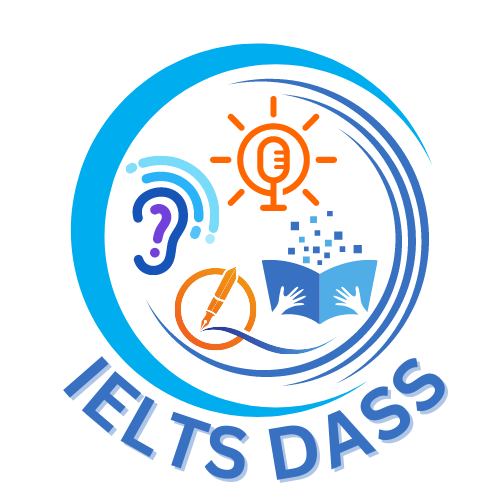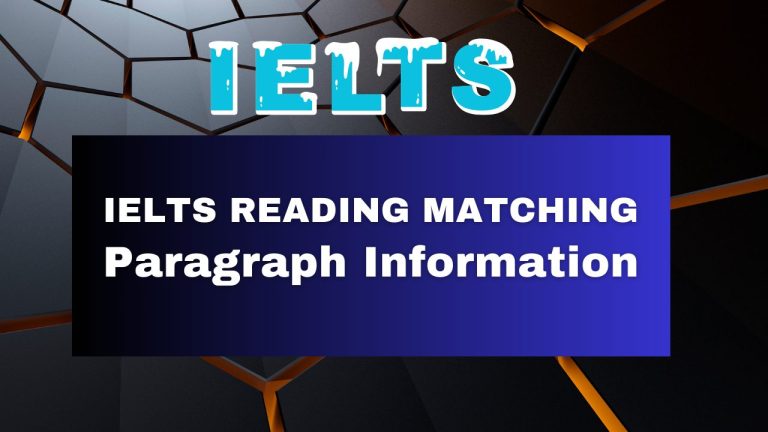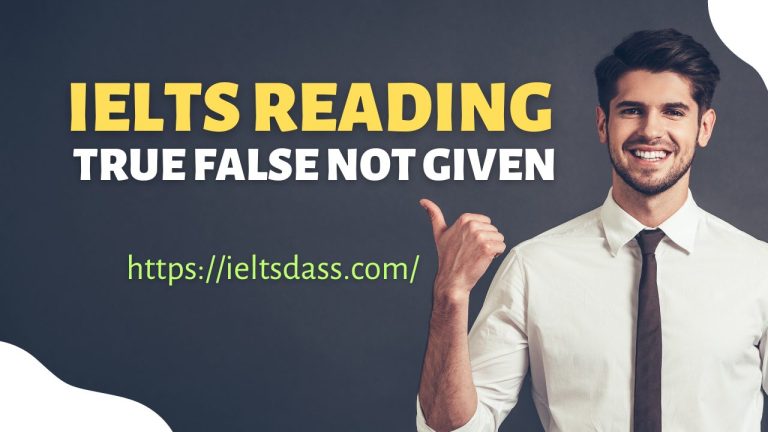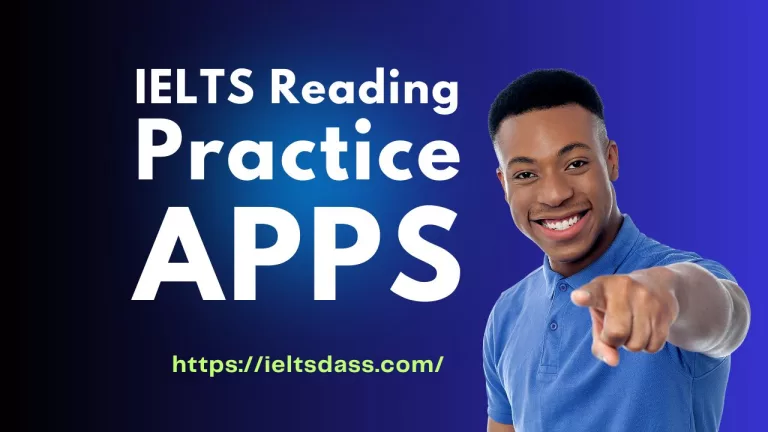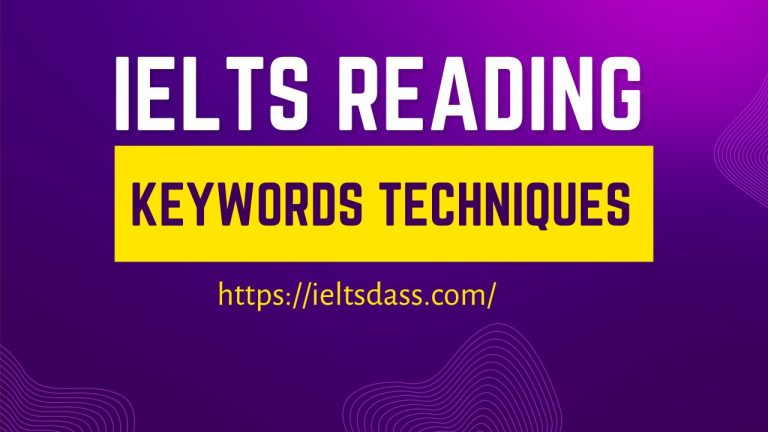Frequently Asked Questions (FAQs) about IELTS Reading
IELTS reading is a very challenging module among four modules of IELTS. It is one of the difficult tests of the IELTS because of managing the time. Most of the time, new aspirants have different types of questions in their minds. In this article, I will share frequently asked questions (FAQs) about IELTS reading. These will be very helpful to get all the information about IELTS reading.
So, let’s get going…
How long is the IELTS reading test?
The time duration for IELTS reading paper is 60 minutes, in which you have to cover your whole reading test, and there is not extra time for transferring answers to the answer sheet.
Frequently Asked Questions (FAQs) about IELTS Reading
There are four modules in IELTS. IELTS reading is also one of them. IELTS reading is a test of 60 minutes in which you have to cover all 3 lengthy passages of the test. These passages are based on general interest and taken from books, articles, journals, newspapers, and from magazines. You will face 14 different types of questions in the test. Total number of questions in the test are forty. Each question carries one mark. You need to put your all answers on the answer sheet from question booklet. After all, these answer sheets are calculated by computer. Most important thing to keep in mind, there is 60 minutes to solve whole paper, most of the candidates have about timing. So, practice a lot and manage your time by applying different types of techniques for reading. There will be no break, because IELTS listening, reading, and writing are conducted by sequence. There is break between IELTS speaking test. It is conducted before or after other three modules.
How many types of IELTS reading are?
There are two types of IELTS reading:
- IELTS reading academic
- IELTS reading general training
IELTS reading academic test is for those candidates who are going to English speaking country for higher degree level study while IELTS reading general training is for those candidates who are going to English speaking countries for work, immigration, or study below degree level.
What is the difference between academic and general IELTS reading?
The writing and reading modules of IELTS are different while listening and speaking modules are same in IELTS. The topic for IELTS academic reading test is related to the academics; it means related to the study life while the topic for IELTS general reading test is related to daily life routine.
How many different types of questions are in IELTS reading?
There are different types of questions you will face in both types of IELTS reading academic as well as general training, mentioned below:
- Multiple choice questions
- Short-answer questions
- Sentence completion
- Table completion
- True / False/ Not Given
- Yes / No / Not Given
- Classification and others
Practice these different types of questions before appearing in IELTS. It will help you in managing your time effectively.
What if I don’t know about the topics in the reading passages?
The passages in the reading tests come from books, newspapers, journals or articles etc. The content of all of these passages is related to daily basis. So, it is not difficult to understand the topics of passages. Sometimes, it happens that you are not educated with western culture, but you need to practice to solve passages.
How many reading passages are in IELTS reading?
Reading section is comprised of three passages, and all of these passages become difficult passage by passage. All these passages are lengthy and take a lot of time to read.
Should I start by skimming through the passages?
Skimming and scanning, both are the types of reading. First of all, you need to read the question. After it, read the passage to find out the answer. You can use the technique of skimming and scanning, while it is easy to read the questions but not the passages. By skimming and scanning, you will get answer fast to save your time.
Does everyone take the same reading test?
Two types of IELTS reading test are:
- IELTS reading academic
- IELTS reading general training
So, IELTS reading test is not same for everyone. Listening and speaking modules are same for everyone.
What kinds of passages are in IELTS reading paper?
The passages in IELTS reading are taken from books, journals, articles, newspapers and magazines. Usually, these passages are lengthy and take an amount of time to solve questions.
How many questions are in IELTS reading test?
The questions in IELTS reading test have different types including multiple choice questions, true false, sentence completion etc. Total number of questions in IELTS reading is 40.
What should I not do in IELTS reading?
It is difficult to manage time in IELTS reading, because the passages in IELTS reading are lengthy. So, it is also important for you not to do common mistakes in test, such as:
- Do not ignore the sequence of the test. Must write the answers in sequence.
- Do not read the whole passage; use skimming and scanning to find answers.
- Do not forget to transfer answers on answer sheet within the time limit.
- Do not ignore instructions.
What are the reading rules in IELTS?
The instructions are the reading rules in IELTS. It will be good for you to answer according to instructions. Some of them are mentioned below:
- Pay attention to the question and its answer.
- Identification of keywords make you fast to answer.
- Read all questions before reading the passage, because by this process you can easily find out the answer of the questions and save time to do well.
- It is also important to answer all questions.
- Must check all answers before submitting.
Can I write on the reading question paper?
You can write on the reading question paper. You can use it to make note, underline keywords or you can write on any part of the reading question paper. Your answer sheet will be checked. Your marks are calculated by your answer sheet.
Can I write T instead of true?
You can write T instead of true, because abbreviations are accepted. You can write F instead of false and NG instead of not given also.
Which thing of IELTS reading is most difficult?
There are three passages in IELTS reading test. But the most difficult step is about time management in IELTS reading test to solve these passages within given time constraint.
How is IELTS reading checked?
In reading test, there are 40 questions and each question carries 1 mark. If your correct answers are 35, it means you got 35 marks. All these marks are converted into bands ranging from 0-9.
How can I find out my reading speed?
It is not difficult to find out reading speed. You can test you reading speed by clicking below link.
https://swiftread.com/reading-speed-test
What is the best way to improve IELTS reading?
IELTS reading can be improved by following these tips:
- Develop different types of reading skills- skimming, scanning, extensive reading or intensive reading.
- Use valid resources for preparation.
- Must manage your time.
- Develop your reading skills.
- Read as much as possible to improve reading.
- Practice makes perfect. So, do a lot of practice.
Is there a break between IELTS listening and reading?
There is no break between IELTS listening and reading. IELTS listening, reading and writing are held on the same day and time while there is break between speaking. Speaking will be held either on same day, before or after within the seven days.
What is the lowest score in IELTS reading?
The IELTS scores are in bands format. The score range is between 0-9 in which 1 is the lowest band while 9 is the highest band in IELTS reading.
What makes IELTS reading difficult?
The passages in IELTS reading are lengthy. You have just 60 minutes to answer all 40 questions in reading test. So, the most difficult step is to understand lengthy passages and answer within a short time. It makes IELTS reading test difficult.
Where does IELTS reading come from?
The passages in IELTS reading test are authentic and come from books, newspapers, journals, articles or magazines.
Is IELTS reading marked by computer?
IELTS reading test is automatically marked by computer.
How to identify keywords in IELTS reading?
It is not tough to identify keywords. Here is listed below key points to identify keywords:
- Nouns
- Verbs
- Locations
- Facts and figures
- Dates
- Days or any specific event
- Capitalized words.
What is the fastest way to get answers in IELTS reading?
By finding keywords, you can easily get answers with fast pace. You can underline or highlight keywords. You will quickly find answers by this process.
Which pencil is used in IELTS reading?
If you take IELTS on paper, you will need to complete the paper by pencil. You are bound to use lead pencil for writing.
Is IELTS reading just based on multiple choice questions?
There are 14 different types of questions in IELTS reading test. Multiple choice questions is also one of them.
What are the three main types of reading?
Three different types of reading are skimming, scanning and careful reading.
What is the highest band in IELTS reading?
The highest band for IELTS reading is 9. IELTS reading score range is 40 and these scores are converted in the form of bands ranging from 0 to 9.
Can I write true instead of yes in IELTS reading?
When you write true instead of yes, it will be considered wrong. In this type of task, True, False or Not Given is in the test. You will have to answer according to the instructions.
How to solve matching information in IELTS reading?
- First of all, read instructions carefully.
- Read questions.
- After reading questions, use skimming to find out answer.
- Use scanning to get similar words.
- Read question again and after scanning you will definitely get answer of that question.
Why is IELTS reading difficult?
The passages in the test are very lengthy. Most of the time, passages are paraphrased of the questions. You have short amount of time to solve 40 questions of the IELTS reading test. In this way, IELTS reading is difficult.
How to manage time in IELTS?
Tips to manage time:
- Read the questions first.
- After it, apply skimming and scanning to the text.
- Do not read whole text.
- Pay attention on introduction and conclusion.
- Use careful reading techniques on introduction and conclusion.
- Practice a lot.
